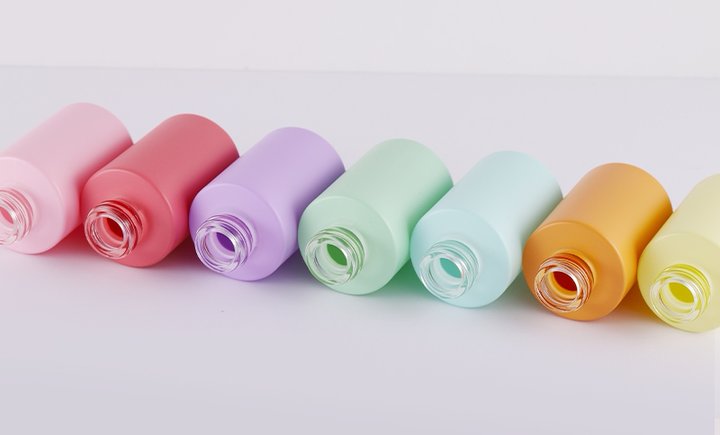With the improvement of people’s living standards, consumers’ requirements are also rising, not only for practicality and convenience, but also for external aesthetics, and cosmetic manufacturers are also working on the aesthetic aspects of packaging in order to attract consumers’ attention.
With the continuous subdivision of industrialized production and the emergence of new processes and materials, the design effects that are applied in actual products are changing day by day. In order to enhance the sense of value of products and attract consumers’ eyes; the plastic surface needs to be decorated (secondary processing), thus carrying out spraying, silk-screening, labeling, hot stamping, electroplating, water transfer printing and other processes on the plastic surface to achieve aesthetic effects.
Process introduction
01 Paint spraying
To make the product achieve the effect of metal mold and various color, to cover the surface of the plastic shell defects.
Definition of paint spraying: It is to spray paint on the plastic surface or inner surface.
(Painting process diagram)

02 Silkscreen
Every commodity in circulation needs to indicate the date of manufacture, shelf life and other related information. As the market changes, consumers feel dull for single screen printing color, after that there are secondary, tertiary and other multi-color multiple screen printing to enhance consumer eye.
**Silkscreen definition: **Silkscreen principle is the process of ink penetration through the screen mesh to the printed material, in a specific location on the surface of the plastic product, printed with the required text.
(Screen printing process diagram)
03 Labeling
In order to save cost, but also want to have flowers, grass, trees, animals and other customer-specified patterns on the product, you can choose to label.
**Labeling definition:** Labeling generally belongs to the self-adhesive material, this method is also called synchronous labeling method. Labeling is done by a labeling machine when the leading edge of the label is partially affixed to the packaging parts.
(Labeling process diagram)
04
Hot stamping
To make the plastic surface with wood grain or metal sense, to achieve the effect of plastic instead of wood, plastic instead of metal.
Definition of hot stamping: hot stamping is the use of the principle of heat pressure transfer, through the hot stamping machine at high temperature on the metal part of the paper covered in the product surface, so that its surface with metal characteristics.
(Stamping process diagram)
05 Electroplating

Through the treatment of this process can get some metal color effect, such as high-gloss, matte, etc., with different effects constitute the difference of the effect of the product, through this treatment for the product design to add a highlight.
**Definition of plating:** Plating is the process of using electrolysis to deposit metal or alloy on the surface of the workpiece to form a uniform, dense and well-bonded metal layer, and it is called plating. Simply understood, it is a physical and chemical change or combination.
(Plating process diagram)
06 Water transfer printing
This technology allows multi-color overprinting of irregular parts. The color pattern can be cloaked on any shape of workpiece, solving the problem of difficult printing of three-dimensional products for manufacturers. Curved surface draping can also be added to the surface of the product with different patterns, such as leather, wood, flower, jade and lucite patterns, etc.
**Water transfer definition:** Water transfer technology is the use of water pressure with colored patterns of transfer paper or plastic film polymer hydrolysis of a kind of printing.
(Water transfer printing process diagram)
Along with the development of society, I believe there will be more secondary processing processes emerge to bring consumers good visual effects and the use of texture.